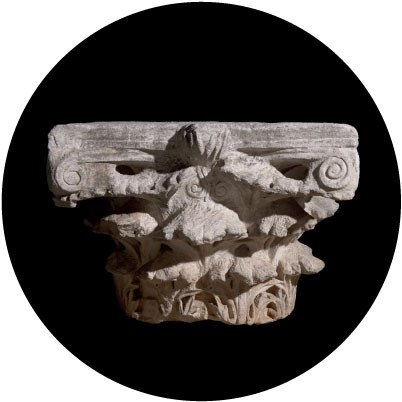Open-air exhibition on the stone monuments and the memory of the city
Most items of this exhibition date from the 1st to the 7th c. AD, and few dating to later periods.
Stone, a sturdy natural material can be shaped into various forms through carving. Its durability against time led to its use in the construction of temples and public buildings, the carving of statues of heroes and gods, busts of rulers and prominent citizens. Laws and edicts of the cities were carved in stone, votive inscriptions to the gods, honorary inscriptions to the rulers, the kings and the emperors. Through relief stone stelae, altars and monuments, people bid farewell to their deceased and marked their burial ground, in a, possibly futile, attempt to fight the oblivion brought by death.

This exhibition serves as a reminder that Archaeology can only gather few sherds, scattered stones of our collective memory from our past heritage.
The exhibition is accessible by people with disabilities and blind visitors. Wheelchairs can access the exhibition thanks to the use of relevant flooring, while special paths facilitate access to visually impaired visitors and direct them to the exhibition's highligths, where braille inscriptions are available in Greek and English that provide detailed information.
Specially designed archaeological trenches have been created for educational programmes on excavation, aiming to acquaint young children to the processes and magic of archaeological discovery.


























